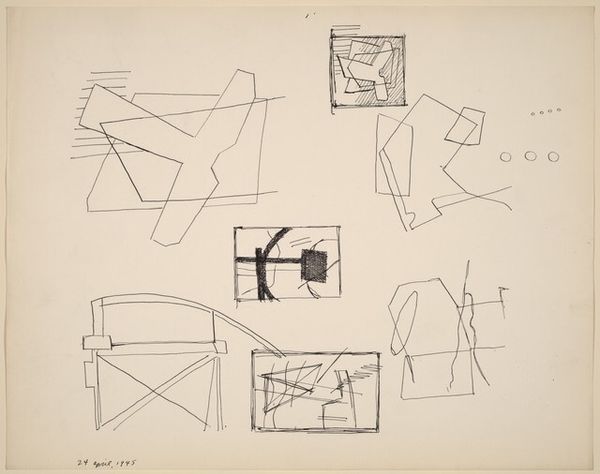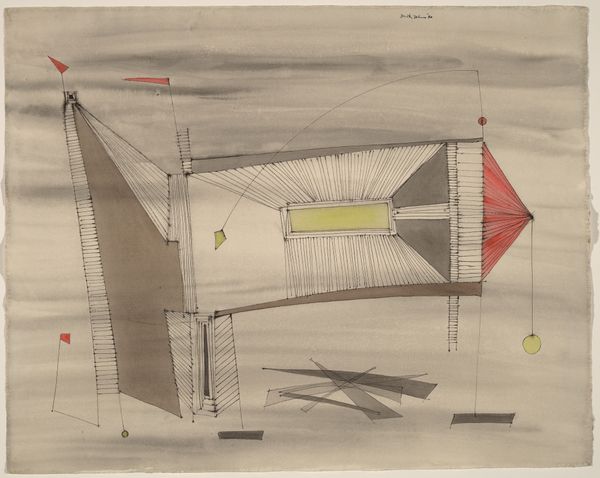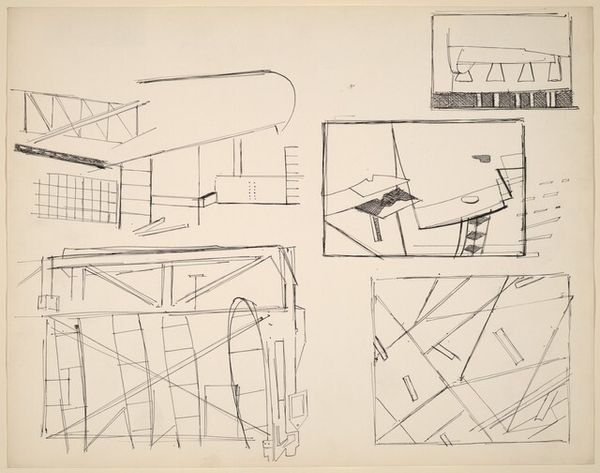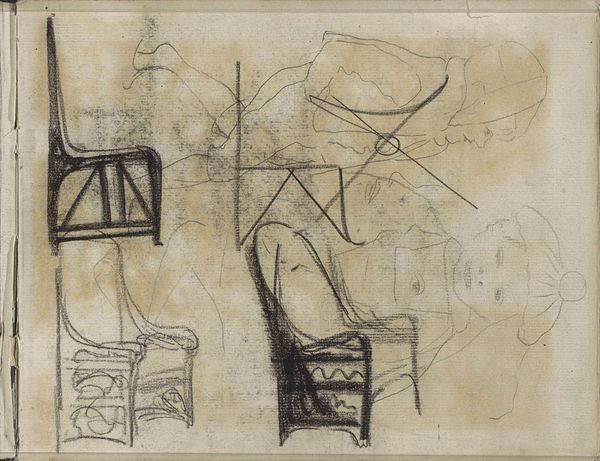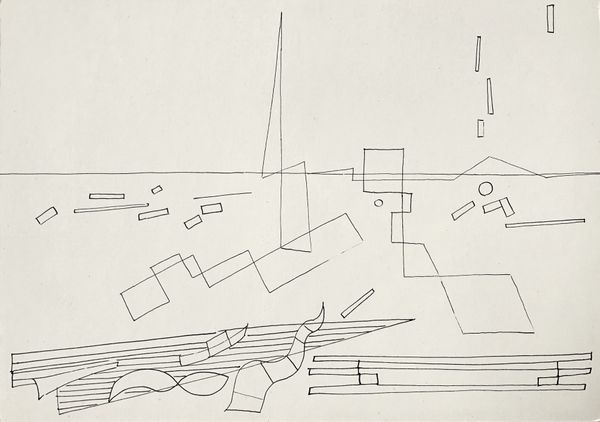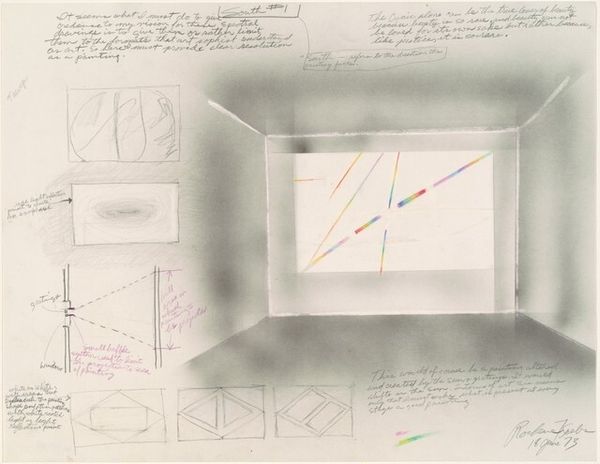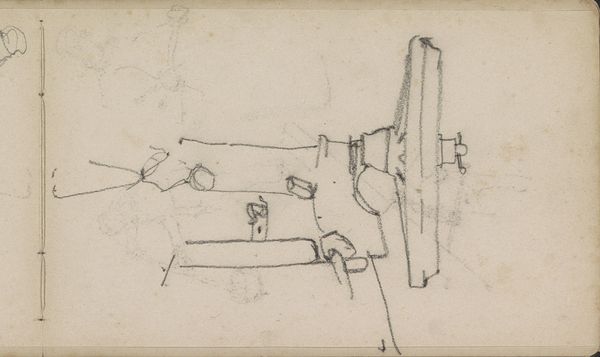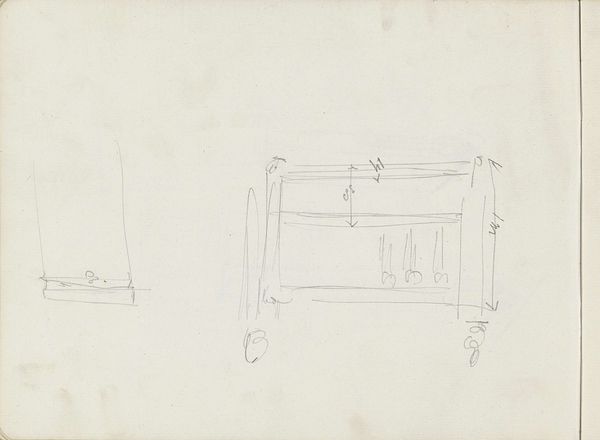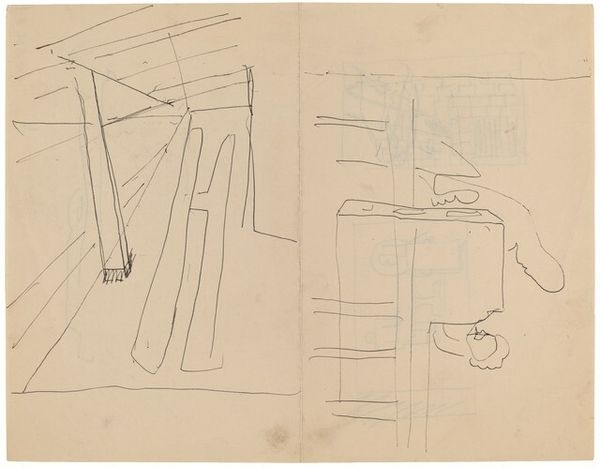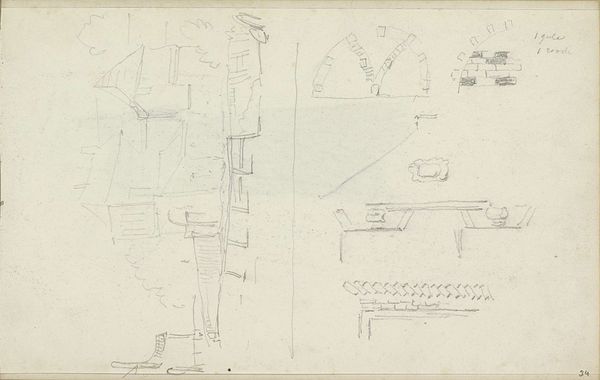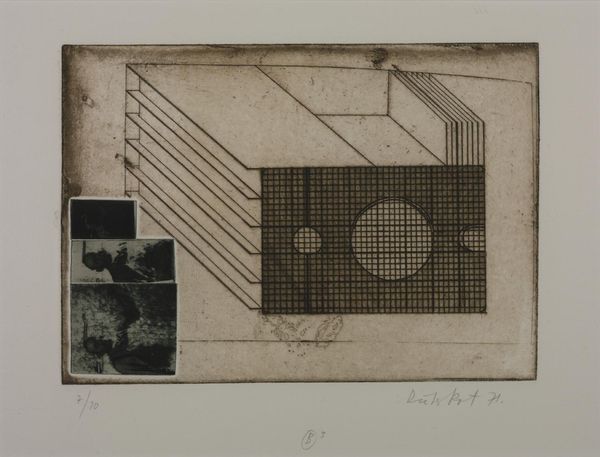
drawing, paper, ink
#
drawing
#
etching
#
paper
#
ink
#
geometric
#
abstraction
#
modernism
Dimensions: overall: 45.9 x 58 cm (18 1/16 x 22 13/16 in.)
Copyright: National Gallery of Art: CC0 1.0
Curator: Looking at Dorothy Dehner’s “Untitled” from 1969, done with ink and etching on paper, my immediate reaction is a feeling of playful curiosity. There’s something almost architectural about the geometric forms. Editor: Definitely architectural! I see a landscape populated by imagined machines, rendered with surprising sensitivity given its construction from geometric parts. But beyond pure formalism, consider the year. 1969 was turbulent: Vietnam protests, civil rights struggles, the second wave feminism movement. It’s impossible not to consider Dehner’s position as a woman artist in that historical context. Curator: Good point. Speaking materially, look at the visible etching lines. They emphasize process over pure representation, demystifying art production. In that sense, it parallels how artists during this time sought to redefine high art. This reminds me of craft traditions! It brings materiality and making to the foreground. Editor: Absolutely. Moreover, consider Dehner's journey—initially overshadowed by her marriage to David Smith, a better-known sculptor. Doesn't this almost suggest a reclaiming of artistic space, using simple materials to comment on grander social structures and inequalities within the art world itself? The vulnerability of drawing mirrors the fragile state of gender relations during this period. Curator: That's a powerful interpretation. The drawing has such a raw quality – like seeing the inner workings of an artistic machine or revealing the physical nature of the medium. Did the economic reality of producing these types of works enable Dehner's independence and freedom in other works? What’s on her workbench here? Editor: What I appreciate here is how deceptively simple it all appears, while being underpinned by quite advanced conversations and reflections concerning art, social justice, and even gendered labour. It encourages a really intimate engagement. Curator: Agreed. Seeing this artwork invites us to slow down. We become attuned to line, form, and process, allowing it to reveal hidden structures of value and influence in an immediate sense. Editor: It really emphasizes the idea of making the personal political! I keep going back to that. I love this drawing!
Comments
No comments
Be the first to comment and join the conversation on the ultimate creative platform.
